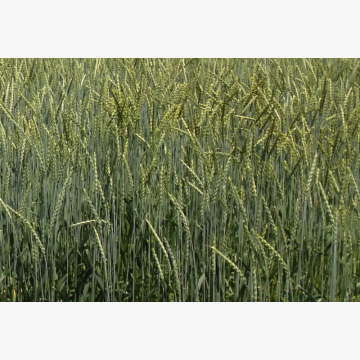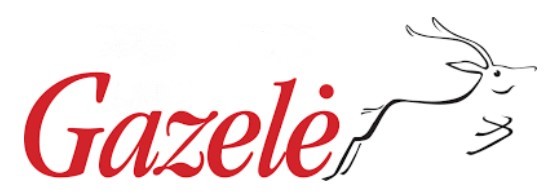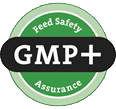- Home
- Seeds
- Winter cereals, etc.
- Spelta wheat
- OBERKULMER ROTKORN
FOR CONSULTATIONS APPLY TO:
Commercial director
Lina Smalskienė
tel. +370 618 02 551
e-mail linak@agrolitpa.lt
Sales manager
Tautvydas Kliučininkas
tel. +370 681 35 093
e-mail tautvydask@agrolitpa.lt
Sales manager
Eglė Petkevičienė
tel. +370 626 95 458
e-mail eglep@agrolitpa.lt
Sales manager
Kotryna Nakrošytė
tel.: +370 601 39 282
e-mail kotryna@agrolitpa.lt
OBERKULMER ROTKORN
A mid-late, very tall spelt with good quality grains, especially suitable for organic farming
- One of the best old varieties in Europe
- Large grains
- Good winterhardiness
- Good resistance to diseases
- High protein and gluten content
- Excellent grain quality
- Sensitive to N surplus
- One of the oldest and best spelt varieties in Europe
- Top quality traditional old spelt variety
- Yield potential – low (3 points out of 9) (4.5-5.5 t/ha)
- Earliness – medium
- Maturation time – medium/late (6 points out of 9.0)
- Plant height – high (8 points out of 9.0) (140-150 cm)
- Perfectly suppresses weeds
- It tolerates drier periods well due to its strong root system
- Resistance to lodging – medium (5 points out of 9.0)
- Winter hardiness – high (7 points out of 9.0)
- Tolerance/ resistance to resistance to arctic tests – 61% (when results of 40-50 % for wheat indicate the reliability of the variety for growing in our climate zone)
- 1000 grain weight – high (7 points out of 9.0) (80-105 g)
- Excellent grain quality, very high hardness index, protein and gluten content
- Protein content – high (8 points out of 9.0) (13.9-21.9 %)
- Gluten content – high (8 points out of 9.0)
- Falling number (Hagberg) (according to Hungarian investigation) – 350-450
- Extremely good adaptation to different habitats, low demand for soil and environmental conditions
- Suitable for extensive conditions
- High sensitivity to excess nitrogen, due to the high height of the plant reaching 140-150 cm, it has a sensitivity for lodging,
- Exclusively recommended for organic farms
- Perfect for organic farming and production of organic products
- The variety has good competitive strength against weeds, so two harrowings are usually sufficient. The first harrowing should be made as early as possible after the three-leaf stage in spring, and the second – after three to four weeks
- No particular pest problems are known in spelt cultivation
- Powdery mildew occurs only rarely, usually due to over fertilization
- Heading time – medium – 4 points (out of 9.0)
- Maturation time – medium – 6 points (out of 9.0)
- Plant height – high – 8 points (out of 9.0)
- Resistance to lodging – medium – 5 points (out of 9.0)
- Winter hardiness – high – 7 points (out of 9.0)
- 1000 grain weight – high – 7 points (out of 9.0)
- Protein content – high – 8 points (out of 9.0)
- Gluten content – high – 8 points (out of 9.0)
Resistance to diseases (1-9 points)
|
Mildew |
4-7 points |
Medium |
|
Brown rust |
5-6 points |
Medium |
|
Septoriosis |
6 points |
Medium |
- Grain yield – 4.28-5.15 t/ha
- Straw yield – 9.8-12.0 t/ha
- Plant height – 140-161 cm
- 1000 grains weight – 100-118 g
- Hectoliter weight – 74.5-80.9 kg/hl
- Protein content – 15.9-17.3 %
- Falling number – 104-298 s
- Sedimentation – 15-24 (Eh)
- Wet gluten content in flour – 39.5-45.0 %
- Gluten (glue) index – 14-44 (abs.)
- Cooking volume RMT – 542-597
- Grain > 2.5 mm – 85.5-95.9 %
- Share of pure grain – 68.8-71.4 %
- Susceptibility to yellow rust – 1.5-2.5 points (out of 9)
- Susceptibility to brown rust – 1.0-3.8 points (out of 9)
- Susceptibility to powdery mildew – 1.0-2.5 points (out of 9)
- Susceptibility to leaf septoria – 1.9-2.5 points (out of 9)
- Resistance to lying down – 4.4-6.9 points (out of 9)
- Quantity of plants – 264-315 units/m2
- Number of ears – 461-527 pcs/m2
*data from organic trials in Germany (Landesortenversuche in Thüringen, 2016-2018)
According to German national plant varieties organic trials (Bundessortenamt) 2018:
- Yield – low (3 points out of 9)
- Heading time – moderately early (4 points out of 9)
- Ripening time – medium (6 points out of 9)
- Plant height – very high (9 points out of 9)
- Sensitivity to winter frosts – medium (4 points out of 9)
- Moderately resistant to lodging – susceptibility to lodging – 7 points (out of 9, where 1 is upright and 9 is lodged)
- Crop density – good (4 points out of 9)
- Number of grains in the ear – medium (4 points out of 9)
- 1000 grain weight – high (7 points out of 9)
Susceptibility to diseases (when 1 point – very resistant, 9 – very injured)
|
Mildew |
Medium – 6 points |
|
Yellow rust |
Low – 4 points |
|
Leaf septoriosis |
Low – 4 points |
The varietal parameters may differ from those indicated here when the testing circumstances differ from quondam
Recommended early sowing rate (mid-September): 180-200 kg of seed or 200-250 grains/m²
Recommended sowing rate for late sowing (beginning of October): 200-220 kg of seed or 250-300 grains/m²
Sowing depth: 4-5 cm. Germination of spelt grains with hulls requires more water than grains of common wheat (Triticum aestivum)
Keravos sreet. 17, Kerava,
LT-38 131 Panevėžys district, LITHUANIA
Enterprise's code 168598128
VAT code LT685981219
Tel. +370 615 11 315
E. mail info@agrolitpa.lt




.JPG)

